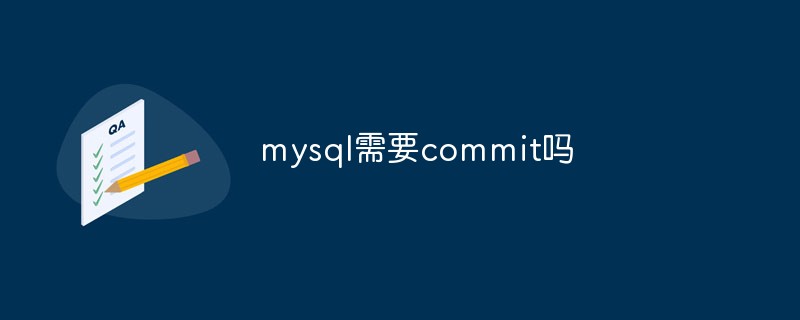MySQL is an open source relational database management system used to store and manage data. It is known for its high performance, reliability, and scalability and is widely used in a variety of applications. Compared with PostgreSQL, MySQL is superior in terms of performance and ecosystem; compared with SQLite, MySQL is richer in features and more scalable.

MySQL: Relational Database Server
MySQL is a relational database management system (RDBMS) that uses For storing, managing and manipulating data. It uses a relational data model to organize data in a two-bit table structure called a table, and establish relationships between tables through primary keys and foreign keys.
Features of MySQL:
- Open source and free: MySQL is open source software that anyone can use, modify and distribute for free .
- High performance: It is known for its fast processing speed and efficient queries, making it suitable for large and complex data sets.
- Reliability: MySQL has transaction support and failure recovery mechanisms to ensure data integrity and consistency.
- Scalability: It supports horizontal and vertical expansion and can handle the increased load by adding servers or increasing resources.
- Widely used: MySQL is one of the most popular RDBMS in the world and is widely used in a variety of applications, from small websites to large enterprise systems.
MySQL Applications:
MySQL is used in a wide range of applications, including:
- Web Applications
- Electronic Business system
- Content management system
- Data warehouse
- Data analysis
##Comparison with other database systems:
- Compared to its main competitor PostgreSQL: MySQL has a slight edge in performance and ecosystem, but PostgreSQL has more advanced features and better security features.
- Compared to its more lightweight competitor SQLite: MySQL offers more features and scalability, but SQLite takes up less space and is better suited for small embedded applications.
The above is the detailed content of What kind of database server does mysql belong to?. For more information, please follow other related articles on the PHP Chinese website!
 图文详解mysql架构原理May 17, 2022 pm 05:54 PM
图文详解mysql架构原理May 17, 2022 pm 05:54 PM本篇文章给大家带来了关于mysql的相关知识,其中主要介绍了关于架构原理的相关内容,MySQL Server架构自顶向下大致可以分网络连接层、服务层、存储引擎层和系统文件层,下面一起来看一下,希望对大家有帮助。
 mysql的msi与zip版本有什么区别May 16, 2022 pm 04:33 PM
mysql的msi与zip版本有什么区别May 16, 2022 pm 04:33 PMmysql的msi与zip版本的区别:1、zip包含的安装程序是一种主动安装,而msi包含的是被installer所用的安装文件以提交请求的方式安装;2、zip是一种数据压缩和文档存储的文件格式,msi是微软格式的安装包。
 mysql怎么去掉第一个字符May 19, 2022 am 10:21 AM
mysql怎么去掉第一个字符May 19, 2022 am 10:21 AM方法:1、利用right函数,语法为“update 表名 set 指定字段 = right(指定字段, length(指定字段)-1)...”;2、利用substring函数,语法为“select substring(指定字段,2)..”。
 mysql怎么替换换行符Apr 18, 2022 pm 03:14 PM
mysql怎么替换换行符Apr 18, 2022 pm 03:14 PM在mysql中,可以利用char()和REPLACE()函数来替换换行符;REPLACE()函数可以用新字符串替换列中的换行符,而换行符可使用“char(13)”来表示,语法为“replace(字段名,char(13),'新字符串') ”。
 mysql怎么将varchar转换为int类型May 12, 2022 pm 04:51 PM
mysql怎么将varchar转换为int类型May 12, 2022 pm 04:51 PM转换方法:1、利用cast函数,语法“select * from 表名 order by cast(字段名 as SIGNED)”;2、利用“select * from 表名 order by CONVERT(字段名,SIGNED)”语句。
 MySQL复制技术之异步复制和半同步复制Apr 25, 2022 pm 07:21 PM
MySQL复制技术之异步复制和半同步复制Apr 25, 2022 pm 07:21 PM本篇文章给大家带来了关于mysql的相关知识,其中主要介绍了关于MySQL复制技术的相关问题,包括了异步复制、半同步复制等等内容,下面一起来看一下,希望对大家有帮助。
 mysql怎么判断是否是数字类型May 16, 2022 am 10:09 AM
mysql怎么判断是否是数字类型May 16, 2022 am 10:09 AM在mysql中,可以利用REGEXP运算符判断数据是否是数字类型,语法为“String REGEXP '[^0-9.]'”;该运算符是正则表达式的缩写,若数据字符中含有数字时,返回的结果是true,反之返回的结果是false。
 mysql需要commit吗Apr 27, 2022 pm 07:04 PM
mysql需要commit吗Apr 27, 2022 pm 07:04 PM在mysql中,是否需要commit取决于存储引擎:1、若是不支持事务的存储引擎,如myisam,则不需要使用commit;2、若是支持事务的存储引擎,如innodb,则需要知道事务是否自动提交,因此需要使用commit。


Hot AI Tools

Undresser.AI Undress
AI-powered app for creating realistic nude photos

AI Clothes Remover
Online AI tool for removing clothes from photos.

Undress AI Tool
Undress images for free

Clothoff.io
AI clothes remover

AI Hentai Generator
Generate AI Hentai for free.

Hot Article

Hot Tools

VSCode Windows 64-bit Download
A free and powerful IDE editor launched by Microsoft

SublimeText3 Mac version
God-level code editing software (SublimeText3)

EditPlus Chinese cracked version
Small size, syntax highlighting, does not support code prompt function

MantisBT
Mantis is an easy-to-deploy web-based defect tracking tool designed to aid in product defect tracking. It requires PHP, MySQL and a web server. Check out our demo and hosting services.

mPDF
mPDF is a PHP library that can generate PDF files from UTF-8 encoded HTML. The original author, Ian Back, wrote mPDF to output PDF files "on the fly" from his website and handle different languages. It is slower than original scripts like HTML2FPDF and produces larger files when using Unicode fonts, but supports CSS styles etc. and has a lot of enhancements. Supports almost all languages, including RTL (Arabic and Hebrew) and CJK (Chinese, Japanese and Korean). Supports nested block-level elements (such as P, DIV),






